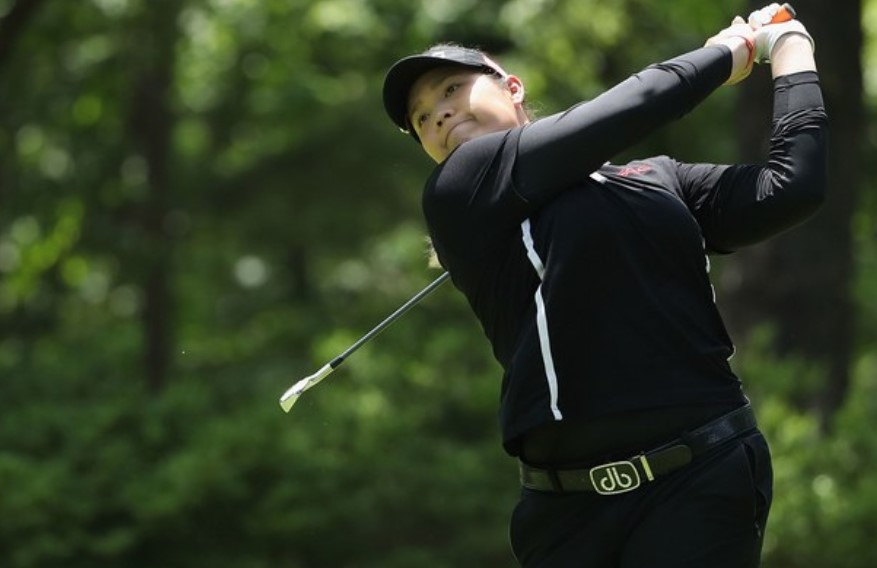An approach shot is one of the most crucial elements in the game of golf. It’s not just a bridge between the tee shot and putting, but also a key indicator of a player’s accuracy and strategic sharpness. In both professional and amateur golf competitions, the ability to consistently execute an effective approach shot often makes the difference between winning and losing.
For beginners, mastering the basic technique of the approach shot will significantly help improve performance on the course. Regular practice, understanding the terrain, and using the right club are essential to perfect this critical shot.
With a strategic mindset and a comprehensive understanding of the types of approach shots, every golfer—whether a novice or a professional—can maximize their chances of achieving low scores in every round. Here’s a detailed explanation from GoGolf.
What is an Approach Shot Definition in Golf?
In golf, every shot has a purpose and its own technique. One of the most important types of shots in game strategy is the approach shot. This term refers to a shot aimed at the green—the area containing the hole—and is usually taken after the first shot, the tee shot. The primary goal of an approach shot is to place the ball as close to the hole as possible so that the next stroke, the putt, can be executed more easily and efficiently.
An approach shot isn’t just a follow-up shot; it demands a combination of accuracy, control, and reading the terrain. A golfer with a good approach shot can significantly change the course of the game. Furthermore, a well-executed approach to the green often determines a player’s final score—especially at the professional level, where the margin for error is extremely small.

Characteristics of an Approach Shot in Golf
An approach shot has distinct characteristics that set it apart from other shots. Generally, an approach shot is taken as the second or third stroke on a hole, depending on the length of that hole. For example, on a par 4, the approach shot is typically the second shot, while on a par 5, it could be the third shot.
The main feature of an approach shot is its emphasis on precision. Unlike tee shots, which prioritize power and distance, an approach shot requires a balance of control and direction. Golfers must be able to accurately judge the distance, account for wind direction, and consider the contours of the green to adjust their swing power appropriately.
In execution, the type of club used for an approach shot varies widely depending on distance and ball position. If the ball is about 150 meters from the green, a golfer might use a mid iron like a 6-iron or 7-iron. However, if the ball is closer, wedges such as a pitching wedge or sand wedge are recommended for better control.
Types of Approach Shots: Understanding Technique Variations
Approaching the green is not always done using the same technique. There are different types of approach shots suited for various situations. Here are some of them:
1. Full Swing Approach
This shot is taken from long distances, typically between 100 and 200 meters. It requires a full swing and usually uses mid irons or hybrids. The advantage of this shot is its ability to cover a long distance with relatively good directional control. Professional players often use this on par 4 or par 5 holes from the fairway.
2. Pitch Shot
A pitch shot is played from a medium distance to the green, about 40 to 100 meters. This technique uses high-lofted clubs like a pitching wedge or sand wedge. The pitch shot excels at producing a ball flight that is high and lands softly on the green.
3. Chip Shot
A chip shot is a short approach shot taken from very close, generally less than 40 meters. The ball only travels slightly in the air and mostly rolls on the green. It’s used when players want to avoid overpowering the ball and focus on directional accuracy and roll speed.
4. Bump and Run
This is a variation of the chip shot where the ball lifts only slightly and then rolls across the green toward the hole. This technique is best suited for dry, fast greens. The club of choice is usually a low iron, like a 7-iron or 8-iron.
All the best courses, one app. Get GoGolf today!
The Goals of a Good Approach Shot
A successful approach shot doesn’t always mean the ball goes straight into the hole. In practice, the primary goal of an approach shot is to create an easy putting opportunity. Thus, accuracy is prioritized over distance or power.
One indicator of a successful approach shot is landing the ball on the green in a position relatively close to the flagstick. This way, the player only needs one or two putts to finish the hole, which significantly impacts overall score efficiency.
Besides getting close to the hole, a good approach shot also avoids hazards such as bunkers, rough, or water. Choosing a safe yet still aggressive ball path is part of an effective approach strategy.
Effective Strategies for an Approach Shot
When making an approach shot, choosing the right strategy is a critical factor that determines the outcome. Here are several aspects that players should consider before taking a shot toward the green:
Calculating Distance
Accurately measuring the distance from the ball’s position to the green is a crucial first step. Many players today use tools like rangefinders or GPS devices to get precise distance readings.
Wind and Course Contours
Wind can dramatically alter the direction and distance of the ball. Players must read wind direction and recognize the course contours—especially the elevation and slope of the green—before selecting a club and shot style.
Choosing the Right Club
Using the correct club is the key to a successful approach shot. If the distance is still quite far, a 5–7 iron might be appropriate. But if within 50–70 meters of the green, wedges are a wise choice as they provide better directional and spin control.
Playing Safe or Aggressive?
This decision largely depends on the hole position and the player’s skill. In some cases, playing safe by aiming at the center of the green is better than trying to hit directly at the flagstick surrounded by hazards.
Conclusion: Approach Shot as the Heart of Scoring
A strategic approach shot that balances precision, club choice, and smart reading of course conditions can dramatically improve a player’s chances of scoring low. With consistent practice and a clear understanding of approach shot variations, golfers at any level can turn this crucial shot into a reliable scoring weapon. Whether you’re a beginner striving for better rounds or a pro chasing the next tournament win, mastering the approach shot is an essential step on your golfing journey.
[ Follow our social media Account: GoGolf Instagram | GoGolf Facebook | GoGolf X ]











